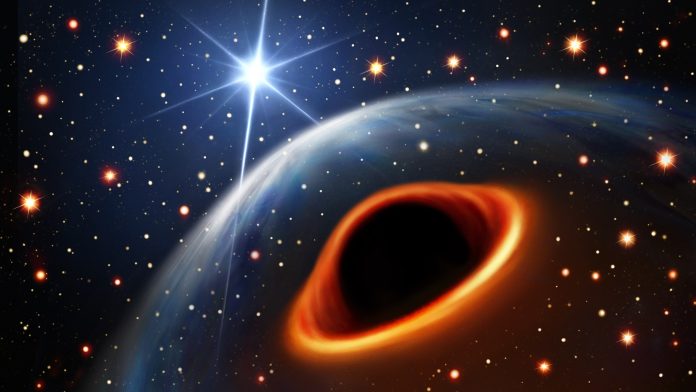Astronomers have recently reported detection of such a compact object of about 2.35 solar masses in the globular cluster NGC 1851 in our home galaxy Milkyway. Because this is at the lower end of “black hole mass-gap”, this compact object could be either a massive neutron star or the lightest black hole or some unknown star variant. The exact nature of this body is yet to be determined. However, what is more interesting is that, unlike the similar compact body detected in the merger event GW 190814, this compact body is found in binary system formation as the companion of a pulsar. If this compact body in binary formation with the pulsar is determined to be a black hole in future, this would be the first “pulsar – black hole system” known.
When fuel runs out, nuclear fusion in the stars stops and there is no energy to heat materials to balance inward force of gravity. Consequently, the core collapses under its own gravity, leaving behind a compact remanent. This the end of the star. The dead star could white dwarf or neutron star or black hole depending upon mass of the original star. Stars between 8 to 20 solar masses end up as neutron stars (NSs) while more heavier stars become black holes (BHs).

The maximum mass of neutron stars is about 2.2 solar masses while black holes formed at the end of stellar life cycle are usually of more than 5 solar masses. This mass-gap between the lightest black home (viz. 5 M⊙) and the heaviest neutron star (viz. 2.2 M⊙) is referred “black hole mass-gap”.
Compact objects in “black hole mass-gap”
Compact objects falling in mass-gap (between 2.2 to 5 solar masses) are not commonly encountered nor are well understood. Some compact objects observed in gravitational wave events are in the mass-gap region. One such recent instance was discovery of a compact mass of 2.6 solar masses on 14 August 2019 in the merger event GW190814 which resulted in black home of final black hole about 25 solar masses.
Compact objects in mass-gap in “binary system” formation
Scientists have recently reported detection of such a compact object of about 2.35 solar masses in the globular cluster NGC 1851 in our home galaxy Milkyway. Because this is at the lower end of “black hole mass-gap”, this compact object could be either a massive neutron star or the lightest black hole or some unknown star variant.
The exact nature of this body is yet to be determined.
However, what is more interesting is that, unlike the similar compact body detected in the merger event GW 190814, this compact body is found in binary system formation as the companion of an eccentric binary millisecond pulsar.
If this compact body in binary formation with the pulsar is determined to be a black hole in future, this would be the first “pulsar – black hole system” known. This is what pulsar astronomers are looking for decades.
***
References:
- LIGO. News release – LIGO-Virgo Finds Mystery Object in “Mass Gap”. Posted on 23 June 2020. Available at https://www.ligo.caltech.edu/LA/news/ligo20200623
- E. Barr et al., A pulsar in a binary with a compact object in the mass gap between neutron stars and black holes Science, January 19, 2024. DOI: https://doi.org/10.1126/science.adg3005 Preprint https://doi.org/10.48550/arXiv.2401.09872
- Fishbach M., 2024. Mystery in the “mass gap”. SCIENCE. 18 Jan 2024. Vol 383, Issue 6680. pp. 259-260. DOI: https://doi.org/10.1126/science.adn1869
- SARAO 2024. News – Lightest black hole or heaviest neutron star? MeerKAT uncovers a mysterious object at the boundary between black holes and neutron stars. Posted 18 January 2024. Available at https://www.sarao.ac.za/news/lightest-black-hole-or-heaviest-neutron-star-meerkat-uncovers-a-mysterious-object-at-the-boundary-between-black-holes-and-neutron-stars/
***






































